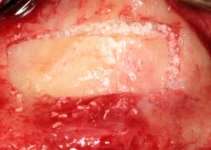Driving with sleep apnea in the UK requires careful consideration due to the potential risks associated with this sleep disorder. Sleep apnea, characterized by pauses in breathing during sleep, can significantly impair your ability to remain alert, posing dangers not just to the sufferer but also to other road users. The DVLA mandates that drivers must inform them of any condition affecting their ability to drive safely, including sleep apnea. Managing sleep apnea effectively, typically through CPAP therapy or lifestyle changes, can help maintain your driving privileges and ensure safety on the roads.
Understanding Sleep Apnea and Its Symptoms
Sleep apnea is a pervasive sleep disorder that affects millions of people worldwide. Understanding its intricacies is crucial for effective diagnosis and treatment. In this section, we delve into the nuances of sleep apnea, its common symptoms, and the various types that may afflict individuals. By comprehending the fundamentals, both patients and healthcare providers can approach this condition with greater awareness and preparedness.
The significance of sleep apnea extends beyond just poor sleep quality. Untreated sleep apnea can lead to serious health issues such as cardiovascular diseases, diabetes, and even accidents caused by daytime drowsiness. Hence, early identification and intervention are essential to mitigating these risks.
By breaking down the disorder into its key components, we aim to provide a comprehensive guide that empowers you to recognize signs and seek appropriate medical advice. With advancements in treatment methodologies and a better understanding of the condition, managing sleep apnea is more achievable than ever before.
What is Sleep Apnea?
Sleep apnea is a disorder characterized by repeated interruptions in breathing during sleep. These interruptions, known as apneas, can last for a few seconds to minutes and may occur 30 times or more in an hour. The most common reason for these interruptions is the collapse of the airway, which restricts the flow of oxygen and prompts the brain to wake the body up to resume breathing.
There are two primary types of sleep apnea: obstructive and central. Obstructive sleep apnea (OSA) is the more prevalent form and occurs when the throat muscles intermittently relax and block the airway during sleep. Central sleep apnea (CSA), though less common, involves the brain failing to send proper signals to the muscles that control breathing.
Recognizing the symptoms and understanding the mechanics behind sleep apnea is the first step toward effective treatment. Most individuals with sleep apnea are unaware they have the condition, as it typically occurs while they are asleep. Thus, it is often identified by a partner or through signs of excessive daytime fatigue.
Common Symptoms
Identifying sleep apnea can be challenging, but knowing its common symptoms can aid in early diagnosis. Some of the most frequent symptoms include:
- Loud snoring – Often the most noticeable sign, although not everyone who snores has sleep apnea.
- Episodes of breathing cessation – Observed by another person, these are moments when the individual stops breathing entirely.
- Gasping or choking – Sudden awakenings accompanied by choking or gasping for air.
- Daytime fatigue – Persistent daytime sleepiness or a feeling of being unrefreshed after a full night’s sleep.
- Morning headaches – Frequently occurring headaches upon waking up.
- Difficulty concentrating – Poor attention span, memory issues, and other cognitive impairments.
While these symptoms can indicate sleep apnea, they are not definitive. A formal diagnosis requires a sleep study, which monitors various physiological parameters during sleep. Understanding these symptoms can prompt individuals to seek medical advice sooner rather than later, potentially preventing the escalation of related health issues.
Types of Sleep Apnea
There are three main types of sleep apnea: obstructive sleep apnea (OSA), central sleep apnea (CSA), and complex sleep apnea syndrome (also known as treatment-emergent central sleep apnea). Each type has distinct characteristics and requires different treatment approaches. Obstructive Sleep Apnea (OSA) is the most common form and occurs when the muscles in the back of the throat relax excessively. This relaxation causes the airway to narrow or close, leading to brief periods where breathing stops. Risk factors for OSA include obesity, a family history of sleep apnea, and anatomical factors such as a narrow airway.
Central Sleep Apnea (CSA) is less common but involves the brain’s failure to transmit signals to the breathing muscles. Unlike OSA, CSA is not usually caused by a blockage of the airway. Instead, it is related to the functioning of the central nervous system. CSA can be associated with conditions such as heart failure, stroke, or other neurological diseases.
Complex Sleep Apnea Syndrome, or treatment-emergent central sleep apnea, is a condition where a person has both OSA and CSA. Initially, these individuals are diagnosed with OSA, but they develop CSA while undergoing treatment for OSA, often with positive airway pressure (PAP) therapy.
Understanding the types of sleep apnea helps tailor treatment strategies to the individual’s specific needs. Comprehensive management often involves lifestyle changes, medical devices, or surgery, depending on the type and severity of the condition.
For more insights into sleep disorders and their management, be sure to explore our other articles. Knowledge is a powerful tool in the fight against sleep apnea and its numerous health implications.
Legal Implications of Driving with Sleep Apnea in the UK
Driving with untreated sleep apnea can have serious legal implications in the UK. The Driver and Vehicle Licensing Agency (DVLA) enforces stringent guidelines to ensure road safety. Understanding these regulations is crucial for individuals diagnosed with sleep apnea to remain compliant and avoid severe legal consequences, including fines and driving bans.
Individuals diagnosed with sleep apnea must be aware of their legal obligations. Failing to inform the DVLA about their condition can result in significant penalties. The DVLA has established clear reporting requirements and driving restrictions for sleep apnea patients to mitigate the risk of accidents caused by excessive daytime sleepiness.
DVLA Guidelines
The DVLA provides specific guidelines for individuals with sleep apnea to determine their fitness to drive. According to these guidelines, drivers must demonstrate that their condition is effectively managed and does not impair their ability to operate a vehicle safely. Non-compliance can result in the suspension or revocation of driving licenses.
For individuals with obstructive sleep apnea syndrome (OSAS), the DVLA requires evidence of regular and effective treatment. This typically involves the use of Continuous Positive Airway Pressure (CPAP) therapy. Drivers need to submit medical reports indicating their compliance with treatment and its success in controlling symptoms.
Moreover, the DVLA mandates periodic assessments and follow-up reports to ensure ongoing management of sleep apnea. These evaluations are crucial to determining the driver’s ability to continue driving safely. Regular reviews and medical examinations help in assessing the risk of excessive daytime sleepiness, which can be a significant hazard on the road.
Reporting Requirements
All drivers diagnosed with sleep apnea have a legal obligation to inform the DVLA. The reporting process involves submitting a medical form that includes details about the diagnosis, treatment plan, and the doctor’s assessment of the condition. Not reporting this condition can result in the suspension of the driver’s license and may lead to legal action if the individual is involved in an accident.
When reporting sleep apnea to the DVLA, it is essential to include comprehensive information about the treatment regimen followed. Documentation should clearly demonstrate the effectiveness of the treatment in mitigating symptoms. Drivers should coordinate with healthcare providers to ensure that all required medical records and evaluations are accurately submitted.
The DVLA evaluates each case individually, considering the severity of the condition and the effectiveness of the treatment. If the DVLA deems that the sleep apnea is well-managed and does not pose a threat to road safety, the individual may retain their driving privileges. However, ongoing compliance with treatment and regular medical reviews is mandatory. Understanding these legal implications and adhering to the DVLA’s guidelines is crucial for individuals with sleep apnea. By ensuring that their condition is effectively managed and reported, they can maintain their driving privileges and contribute to safer road conditions. For more insights on managing sleep apnea and ensuring road safety, explore our other articles.
Health Risks Associated with Driving and Sleep Apnea
Sleep apnea is a serious sleep disorder that occurs when a person’s breathing is interrupted during sleep. This condition can significantly affect various aspects of a person’s life, including their ability to operate a vehicle safely. Drivers with sleep apnea are at a higher risk of accidents due to increased daytime drowsiness and decreased alertness. Studies have shown that individuals with untreated sleep apnea are up to seven times more likely to be involved in motor vehicle accidents. This elevated risk is due to several factors, including micro-sleeps, slower reaction times, and impaired cognitive function.
The National Highway Traffic Safety Administration (NHTSA) has identified sleep apnea as a significant factor in many road accidents. People with sleep apnea often experience frequent awakenings and reduced sleep quality, leading to chronic fatigue. Fatigue affects a driver’s ability to focus, make quick decisions, and remain vigilant, all of which are critical for safe driving. Additionally, the risk of falling asleep at the wheel is notably higher among those suffering from sleep apnea, emphasizing the need for effective treatment and management.
Effective management of sleep apnea is crucial not only for the general health of affected individuals but also for public safety on the roads. Continuous Positive Airway Pressure (CPAP) therapy is one of the most common and effective treatments for sleep apnea. CPAP helps keep the airways open during sleep, reducing the frequency of breathing interruptions and improving sleep quality. Other treatments may include lifestyle changes, such as weight loss, positional therapy, and the use of oral appliances. Seeking appropriate treatment for sleep apnea can greatly reduce the associated health risks, including those related to driving.
Understanding the significant health risks associated with driving and sleep apnea can help raise awareness about the importance of diagnosing and treating this condition. For more in-depth information on related topics, we encourage you to read our other articles and stay informed.
Frequently Asked Questions: Driving with Sleep Apnea in the UK
For those wondering about the legality and safety of driving with sleep apnea in the UK, here are some common questions answered to clarify your doubts and concerns.
Is it legal to drive in the UK if I have sleep apnea?
Yes, it is legal to drive in the UK if you have sleep apnea, but with certain conditions. You must inform the Driver and Vehicle Licensing Agency (DVLA) about your condition if it affects your ability to drive safely. Failing to notify the DVLA can lead to a fine and, if involved in an accident, you could be prosecuted. If your sleep apnea is well-managed and under control, and you’ve followed the advice of your healthcare provider, you are generally allowed to continue driving.
What steps should I take if I am diagnosed with sleep apnea and I am a driver?
If you are diagnosed with sleep apnea and you drive, the first step is to inform the DVLA. You will likely need to undergo an assessment regarding your ability to drive safely. Managing your sleep apnea effectively, such as using a CPAP machine if prescribed, is crucial. Regular follow-up visits with your healthcare provider are essential to ensure your treatment remains effective and that you continue to meet the medical standards for driving.

My name is Salman Kapa, a 73-year-old expert in bone regeneration and dental implantology. With decades of experience in the field, I am dedicated to advancing our understanding of oral health and hygiene. Through my research and writing, I aim to contribute to the development of innovative solutions in dental care.




